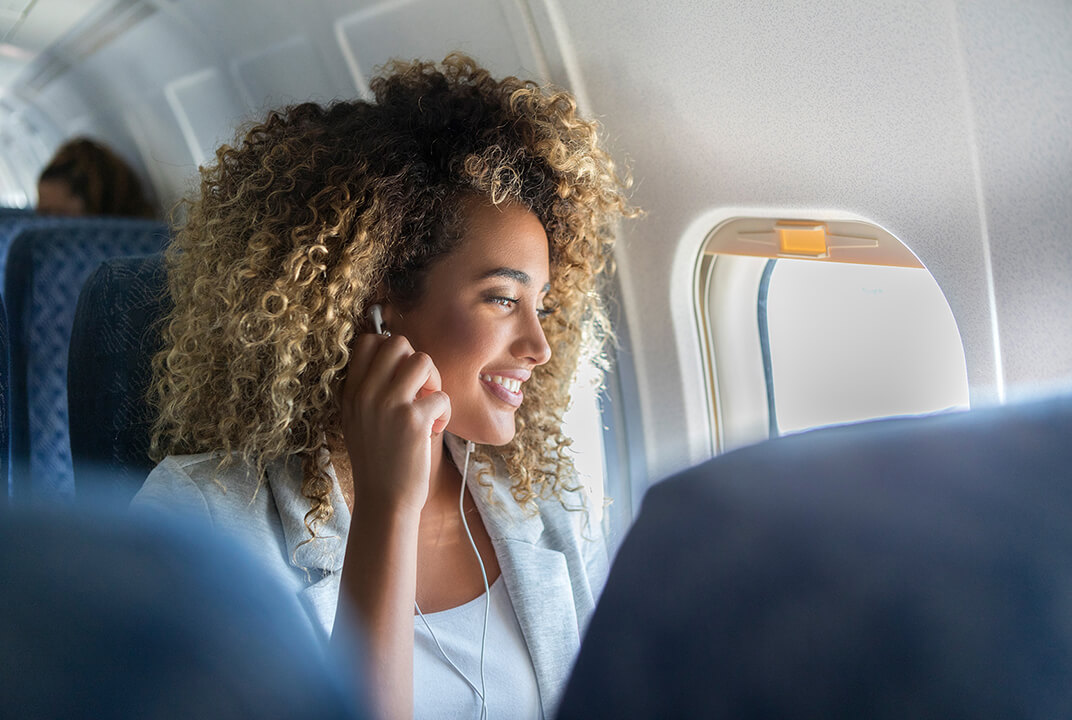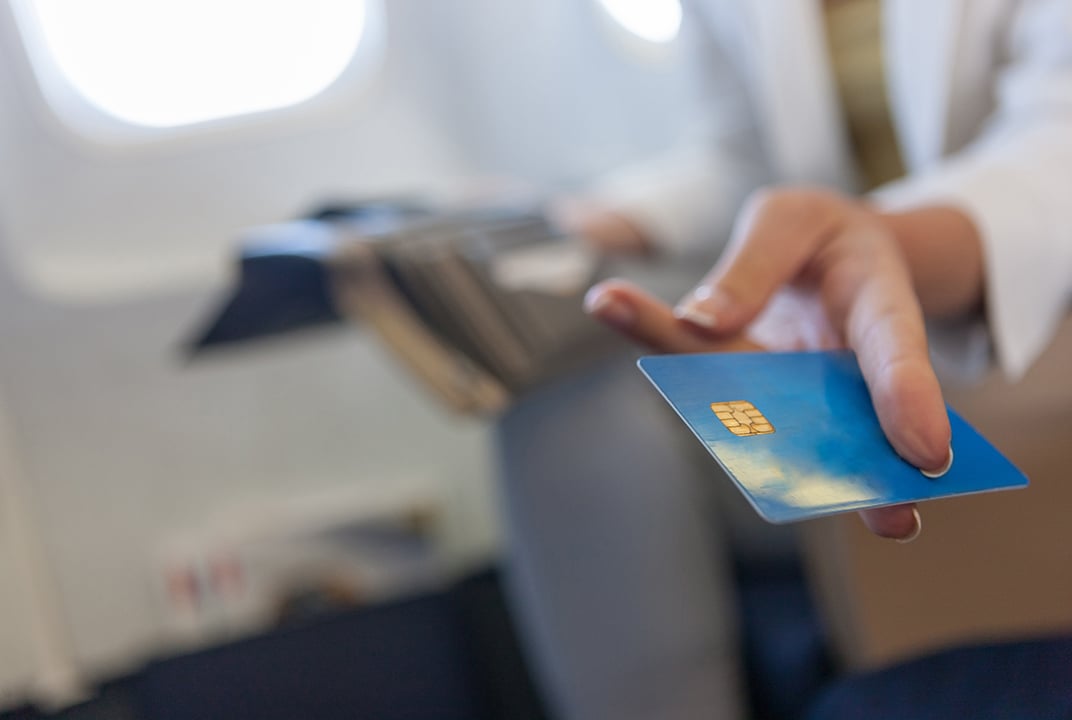Insight | Citilink drives loyalty through IFC
Select Language
Citilink drives loyalty through IFC
Aviation
How free Wi-Fi is ready to raise Citilink’s Indonesian customer satisfaction
Asian low-cost carrier Citilink, a subsidiary of Garuda – recently named Asia’s Best LCC at the TripAdvisor Travellers Choice Awards – is poised to roll out an inflight Wi-Fi service for passengers. Unlike some, Citilink believes a free model is best for driving passenger loyalty and satisfaction.
Citilink’s move is the latest evidence that it’s both possible and economically viable for LCCs to match premium flag carriers when it comes to free inflight connectivity. In doing this, some airlines have faced infrastructure, legal and funding challenges, but thanks to Citilink’s partnership with Inmarsat, Mahata Aero Teknologi (MAT), Lufthansa Systems and Lufthansa Technik, all obstacles have been overcome and Citilink is poised to grow Wi-Fi enabled passenger satisfaction in a challenging emerging market.
As Nina Schulz, Head of Product Sales Aircraft Modification at Lufthansa Technik says: “This contract is further proof of our successful cooperation with our partners Lufthansa Systems, Inmarsat and now with Indonesia Wireless Technology Provider Company Mahata Aero Teknologi. Citilink Indonesia will truly benefit from our multiple expertise.”
A world-class inflight Wi-Fi service
Citilink’s President and CEO, Juliandra Nurtjahjo, understands that being digitally-focused means offering a “world-class inflight Wi-Fi service.”
To this end, the airline has signed a fleet-wide contract for Inmarsat’s GX Aviation inflight broadband solution to be installed on its Airbus A320s. The deal will be facilitated by Indonesian wireless technology provider, Mahata Aero Teknologi (MAT). Mahata’s Managing Director, Iwan Setiawan, described the airline as a perfect partner: both modern and digitally ‘switched on’.
Connecting Indonesia
Citilink will be among the earliest adopters of LCC Wi-Fi in APAC, aligning with Western budget carriers such as Norwegian and JetBlue, who benefit from the halo effect of free service for all passengers, with high levels of customer satisfaction and industry awards.
Iwan points out that Indonesia is still one digital step behind the West, so offering free, reliable Wi-Fi is a massive draw to a local customer base. Lufthansa’s BoardConnect system, for example, is one of the first models designed to allow inflight browsing that will be faster and more reliable than the internet available in most Indonesians’ homes. At present, just over half (51%) of Indonesia’s 260 million citizens have access to Wi-Fi.
Iwan observes: “At the moment, inflight Wi-Fi is the best way to give the digital experience to the people of Indonesia and capture an audience, compared to conventional ways like magazines, TV and so on.”
He adds “We are transforming idle passengers into fully entertained, engaged and satisfied travellers for our airline customers.”
“Everyone is saying Indonesian e-commerce and online engagement is going to grow rapidly over the next decade. We need to build infrastructure.” According to AirAsia, connectivity queries are among the most frequently asked pre-flight questions – many of them business fliers. This increasing trend of business passengers choosing LCCs for short-haul flights ties back to Citilink’s confidence that Wi-Fi will be sought after.
His confidence is supported by the London School of Economics’ Sky High Economics study, which found that Asia Pacific is forecast to represent the highest share in inflight broadband revenue, worth $10.3bn of the $30bn global airline revenue.
Ranty, VP Corporate Secretary at Citilink, adds: “Our passengers are dominated by business travellers who like to remain connected when on the go. This making their travel time efficient by getting work done whilst flying, or by simply accessing their social media account, checking emails and generally surfing the internet through free connections.”
She believes that IFC not only raises customers’ satisfaction (a fact recently underlined in Inmarsat’s annual Inflight Connectivity Survey, which found that 66% of respondents said it was an absolute necessity), but that it also enables them to share experiences and promote the service.
As Iwan outlines, the emphasis is on BYOD. Via the Mahata app, MAT and Citilink can provide additional services for passengers inflight and can generate additional ancillary revenue for Citilink.
Innovation and customisation made possible through collaboration
Speaking in July 2018, Iwan described the partnership between Inmarsat, Citilink and Lufthansa Systems and Lufthansa Technik and MAT as truly cutting-edge.
The BYOD aspect will be realised by Lufthansa Systems and Lufthansa Technik, Jan-Peter Gaense, Head of Passenger Experience Products and Solutions at Lufthansa Systems, said: “Our digital BoardConnect platform’s open architecture and use of modern docker technology will enable a range of e-commerce services, serving as a perfect base to monetise the airline’s inflight Wi-Fi.”
Nina Schulz adds: “With 15 years of experience, we are able to tailor the equipment of even the largest fleets to our customer’s individual requirements in the shortest possible time.”
On choosing Inmarsat for its IFC solution, Iwan explains: “Collaboration between Inmarsat, Lufthansa Technik and System with their GX System is the state of the art technology for inflight Wi-Fi services, and we believe we brought the best technology to our country.”
Chris Rogerson, APAC commercial director at Inmarsat adds: ‘This is the first partnership of its kind for us. It's a great combination of companies that are all experts in their fields. Individually, we worked with all these partners before but now we came together as ‘Team GX’.”
How Citilink will make the free model pay
So why isn’t Citilink offering the default ‘Pay to Play’ model, and capitalising on Indonesia’s growing demand for Wi-Fi? According to a recent survey, 77% of short-haul passengers would pay for connectivity, with Asians over indexing among those happiest to pay. However, Citilink sees the free access offer as a crucial point of attraction and differentiation and, as Ranty explains, hopes to recoup the cost with the ancillary revenue. Ranty also points out that Citilink can provide extra capacity at an additional cost, “we see this as a great opportunity to reach out to target consumers. As an LCC, we don’t provide seat back screens, so BYOD and Wi-Fi availability is a perfect match.”
Rogerson shares Citilink’s confidence: “The ancillary revenue opportunities will continue to expand,” he says – and notes that free Wi-Fi is actually becoming more common, with AirAsia trialling something similar. He sees Mahata’s efforts as a move to promote internet use generally throughout Indonesia by letting passengers “try before they buy”.
MAT might also consider other partnerships, with local entertainment and music channels for example. Qantas’s Foxtel, Spotify and Netflix subscription model has shown it’s a way to recoup costs.
Future-proofing the partner solution
Finding the right mix of partners is not merely a question of considering how they will work together to deliver the tangible benefits to customers now, but also how they can scale up and collaborate in the future.
Together with Citilink, MAT looked for partners who could foster local approval and negotiate with local infrastructure representatives. They made sure that these partners are able to scale up, together and secure comprehensive and consistent coverage and speed, and guarantee them. As Christopher Rogerson concludes on the team’s future-proofing capabilities.
“It's a process of constant innovation for all of us and this partnership model can be rolled out to other carriers. There's a trust, understanding and respect between all parties which means the project runs smoothly with swift resolutions.”
“I can see this team approach being replicated with other carriers as it’s very smooth and successful. We announced the MOU at AIX in April and the contracts were signed by July. That is lightning fast in this world.”
A fast team delivering fast IFC? This could become the benchmark for connectivity partnership best practice.


